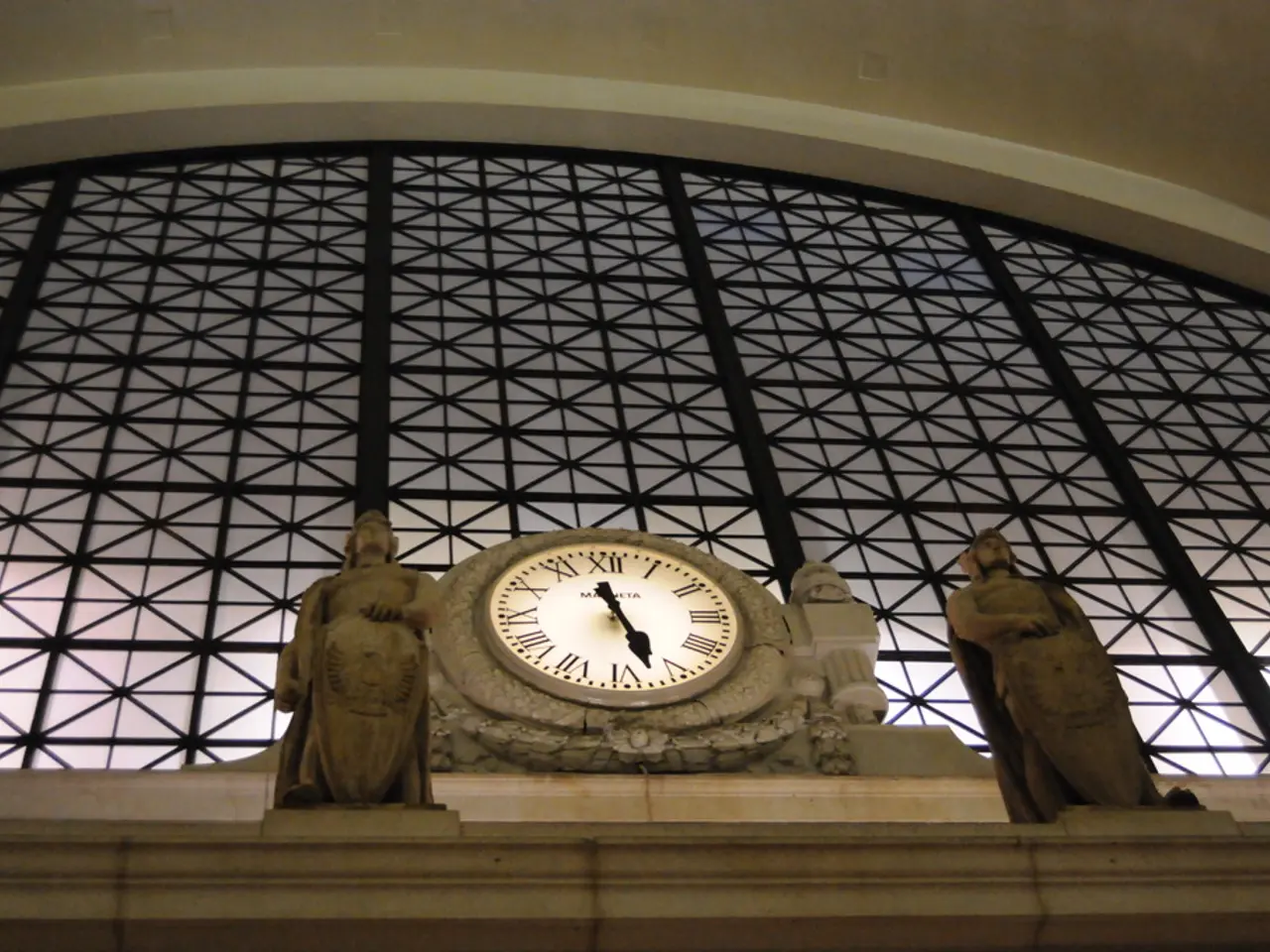Syria Ansonia Parlor Clock Continuation
Maintaining the precision and longevity of an Ansonia Syria parlour clock requires careful handling, especially when it comes to servicing the mainsprings. This detailed guide focuses on essential safety measures, cleaning methods, pivot polishing, and more.
Safety Measures
The servicing process begins with ensuring a safe and organised workspace. Work in a well-lit, clean, and clutter-free area. Use proper tools such as mainspring winders, screwdrivers, pivot burnishers, cleaning solutions, and magnification tools.
When dealing with the mainspring, it's crucial to let down the tension safely. Never remove or work on a mainspring that is fully wound due to the stored energy. Use a mainspring winder tool to carefully and slowly let down the spring tension before removal. If you lack a winder, seek professional help to avoid potential injury or damage.
Wear eye protection during the process, as springs can snap or snap back during handling. Before disassembly, mark the winding direction and spring orientation to ensure correct reassembly.
Disassembly of the Mainspring Assembly
After letting down the mainspring tension safely, remove the clock movement from the case. For an Ansonia Syria parlour clock, locate the mainspring barrel. Remove the barrel cover or bezel carefully following its screws or clips. Extract the mainspring carefully, noting the orientation and shape. If the spring is set on a winding arbor, remove the arbor carefully after releasing tension.
Cleaning Methods
Degreasing the mainspring involves using a commercially available clock cleaning solution or a solvent like naphtha or lighter fluid (ensure good ventilation and no open flames). Submerge the mainspring and use a soft brush to gently remove old grease and dirt. Avoid aggressive abrasives or steel wool, which can damage the spring surface or cause metal fatigue.
After cleaning, rinse the mainspring in clean solvent or isopropyl alcohol to remove residues. Dry thoroughly with a lint-free cloth or let air dry completely to avoid rust.
Cleaning the barrel and movement involves carefully cleaning all contact surfaces inside the mainspring barrel and pivot holes with cleaning solution and a soft brush. Clean the entire movement using clock cleaning solution and an ultrasonic cleaner (optional but effective), taking care to remove old oil and dirt.
Pivot Polishing
After cleaning the mainspring, attention should turn to the pivots and pivot holes. Check pivots for roughness, wear, or burrs. Use a pivot polishing tool or burnisher to smooth and polish the pivot shafts. Rotate the pivot gently between the burnisher and your finger or a soft cloth. Avoid pressure that could thin the pivot.
If pivot holes are worn or rough, they can be polished with a broach or burnisher tool to ensure smooth operation and minimize friction. Proper clearances are important; worn pivots or holes may require bushing or replacement.
Re-lubrication and Reassembly
After cleaning and polishing, apply a very light, specialized clock oil sparingly on the pivots and in the barrel where the mainspring sits—not on the mainspring blade itself unless specified. Reinsert the mainspring into the barrel carefully retaining correct winding direction. Reassemble the movement, ensuring all parts align and pivot smoothly.
Additional Tips
- Practice on less valuable clocks first if you’re new to mainspring servicing.
- Always consult an expert clockmaker or authoritative repair manual for your specific clock model if unsure.
- Keep a photo log during disassembly to aid reassembly.
- Consider replacing an old or fatigued mainspring rather than reusing it, as springs can weaken over time.
With careful handling, cleaning, and lubrication, you can keep your Ansonia Syria parlour clock ticking accurately for years to come.
While working on the mainspring assembly of a vintage Ansonia Syria parlour clock, it's advisable to use smart-home-devices such as a mainspring winder to safely let down the spring tension before removal, for your safety and to avoid potential damage. Regularly maintaining the precision and longevity of such clocks involves not only clock servicing methods but also technology-driven tools, ensuring a seamless collaboration between traditional gadgets like pivot burnishers and modern devices to provide the best care for these antique timekeepers.




